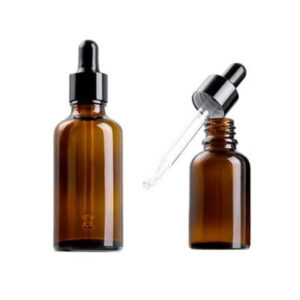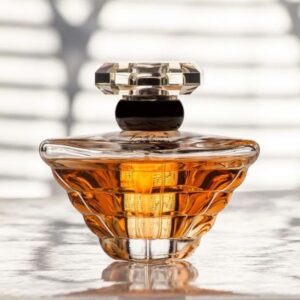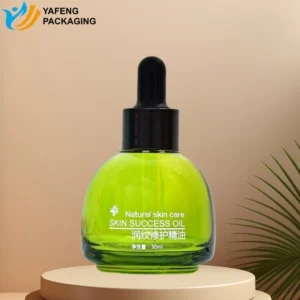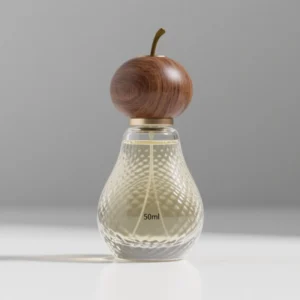
News & Blog
Great things in business are never done by one person. They’re done by a team of people. We have that dynamic group of peoples
This article dives into the often-overlooked topic of perfume bottle recycling. Many of us enjoy a good fragrance, but what happens to the beautiful glass perfume bottles when they’re empty? This comprehensive guide will answer your questions about whether perfume bottles are recyclable, how to properly dispose of them, and explore eco-friendly alternatives. It’s a must-read for anyone who wants to reduce their environmental footprint and make more sustainable choices, even when it comes to their favorite scent.
The short answer is: it depends. While many perfume bottles are made of glass, which is a highly recyclable material, it’s not as simple as tossing them in your regular recycling bin with your other glass containers. Perfume bottles often contain components like pumps, caps, and decorative elements that can complicate the recycling process. Many perfume bottles are crafted from glass, a material that can, in theory, be recycled indefinitely without losing quality. This is great news because it implies that perfume bottle recycling can significantly contribute to a circular economy, where materials are reused rather than discarded. However, the reality of recycling perfume bottles is slightly more complex.
The ability to recycle perfume bottles hinges on several factors, including the type of glass used, the presence of other materials like plastic or metal, and the capabilities of your local recycling facilities. Some recycling centers might accept glass perfume bottles, while others may not. It’s crucial to check with your local recycling program to understand their specific guidelines. Good news is that glass can be recycled many times. The ability to recycle a perfume bottle depends on the type of materials used in its construction and the capabilities of your local recycling plant. Many perfume bottles are made of glass, which is a highly recyclable material.

Recycling plays a crucial role in reducing waste and conserving resources. When it comes to perfume bottles, recycling them helps minimize the amount of waste that ends up in landfills. Landfills are a significant source of greenhouse gas emissions, contributing to climate change. Moreover, manufacturing new glass from raw materials requires a substantial amount of energy. Recycling perfume bottles helps reduce the demand for virgin materials, thereby conserving energy and reducing carbon emissions. Recycling perfume bottles is not just about reducing landfill waste; it’s also about conserving valuable resources.
The perfume industry, like many others, has a significant environmental impact. Manufacturing perfume and its packaging requires resources like water, energy, and raw materials. By recycling perfume bottles, we can contribute to a more sustainable perfume industry. Recycling perfume bottles is not only possible but also crucial for minimizing the environmental footprint of the perfume industry. By embracing perfume bottle recycling, we can collectively contribute to a greener and more sustainable future. It’s a small step with a big impact, demonstrating that even our choices regarding fragrance can make a difference. Perfume bottles often contain a mix of materials, including glass, plastic, and metal.
Perfume bottles are often beautiful and intricate, but this complexity can make them difficult to recycle. The majority of perfume bottles are made of glass, but they often include other components such as plastic or metal pumps, metal collars, and decorative elements like plastic or metal. The spray mechanism is often made of plastic and metal and is generally not recyclable.
Here’s a breakdown of the common materials found in perfume bottles:
| Material | Recyclable | Notes |
|---|---|---|
| Glass | Yes | Most common material for the bottle itself, widely recyclable. |
| Plastic (Pumps, Caps) | Sometimes | Depends on the type of plastic and your local recycling program’s capabilities. |
| Metal (Collars, Caps) | Sometimes | Aluminum is generally recyclable, but other metals may be less so. Depends on local recycling guidelines. |
| Mixed Materials | Rarely | Decorative elements made of multiple materials are usually not recyclable. |
Glass perfume bottles are generally recyclable. However, other components, such as the plastic pump and cap and the nozzle, may not be. It’s essential to check your local recycling guidelines to determine what materials are accepted in your area. The good news is that glass, the primary material for many perfume bottles, can often be recycled indefinitely without losing quality. However, elements like plastic pumps, metal collars, and decorative pieces can complicate the recycling process. Plastic perfume bottles are less common but can sometimes be recycled, depending on the type of plastic. It’s important to check with your local recycling program to understand how to deal with these materials.
Properly preparing your perfume bottles for recycling is crucial to ensure they are processed correctly and avoid contamination during the recycling process. The first step is to remove any remaining perfume. You can do this by letting the bottle air out or using absorbent materials like paper towels or cat litter. Once the bottle is empty, rinse it with water to remove any residue. Next time you finish a bottle of perfume, remember to follow these steps.
The next step is to separate the different components of the perfume bottle. Remove the pump, cap, and any other removable parts. These parts may not be recyclable and should be disposed of separately. It’s important to check with your local recycling program to determine whether they accept perfume bottles and what specific preparation steps are required. Here is a table to help prepare perfume:
| Step | Action |
|---|---|
| Empty the Bottle | Ensure the perfume bottle is completely empty. Let it air out or use absorbent materials to remove any remaining perfume. |
| Rinse | Rinse the empty bottle with water to remove any perfume residue. |
| Disassemble | Remove the pump, cap, and any other detachable parts. |
| Check Guidelines | Consult your local recycling guidelines to determine if they accept glass perfume bottles and if there are any specific instructions for the separated components. |
| Separate | If your local recycling program accepts the components, separate them according to the guidelines (e.g., glass in one bin, plastic in another, and non-recyclables in the trash). |
| Clean (Optional) | For heavily soiled components, a quick wash with soap and water can help prevent contamination in the recycling stream. Ensure all parts are dry before placing them in the recycling bins. |
It’s crucial to follow these steps to avoid contaminating the recycling stream. Check with your local recycling facility to confirm their specific requirements, as many perfume bottles aren’t accepted due to their mixed materials.

While curbside recycling programs may not always accept perfume bottles, there are alternative programs that do. Some perfume brands have their own recycling programs where you can return your used bottles to them for proper recycling. These programs may involve mailing the bottles back to the company or dropping them off at designated collection points. Some specialized recycling centers may also accept perfume bottles. It’s worth checking with your local recycling facility to see if they have any partnerships with such centers.
Additionally, some retailers that sell perfume may have collection programs for used perfume bottles. These retailers may partner with recycling companies or organizations that specialize in recycling cosmetics and fragrance packaging. Another option is to look for local organizations or events that collect perfume bottles for recycling or upcycling. If you’re unsure whether your local recycling program accepts perfume bottles, it’s always best to check their website or contact them directly.
Perfume bottle recycling faces several challenges that can make the process more complex than recycling other types of glass containers. One of the main challenges is the presence of mixed materials. As mentioned earlier, perfume bottles often contain a combination of glass, plastic, and metal components. These different materials need to be separated for proper recycling, but this can be difficult to do, especially if the components are tightly integrated. In many cases, consumers may not have the time to properly disassemble a perfume bottle before recycling.
Another challenge is the small size of some perfume bottles. Small items can be difficult for recycling machinery to sort and process, and they may fall through the cracks and end up as contaminants in the recycling stream. Contamination is a major issue in the recycling industry. If non-recyclable materials, such as plastic pumps or metal collars, are mixed in with recyclable glass, it can contaminate the entire batch of glass, making it unusable. This is why it’s so important to properly prepare perfume bottles for recycling by removing any non-recyclable components.
| Challenge | Description |
|---|---|
| Mixed Materials | Perfume bottles often contain a combination of glass, plastic, and metal components, which can be difficult to separate for proper recycling. |
| Small Size | Some perfume bottles are very small, making them difficult for recycling machinery to sort and process. |
| Contamination | Non-recyclable components, such as plastic pumps or metal collars, can contaminate the recyclable glass if not properly removed. |
| Lack of Infrastructure | Not all recycling facilities are equipped to handle perfume bottles, and there may be a lack of specialized programs for perfume bottle recycling. |
Absolutely! Reusing or repurposing empty perfume bottles is a great way to reduce waste and give these beautiful containers a second life. There are many creative ways to reuse perfume bottles, from using them as vases for small flowers to creating your own reed diffusers. Reusing perfume bottles is a fantastic way to extend their life and reduce waste.
Here are a few ideas for reusing perfume bottles:
Repurposing perfume bottles is not only environmentally friendly but also a fun and creative way to add a personal touch to your home decor. So, before you throw away your next empty perfume bottle, consider how you might be able to give it a new purpose. You can even make a new perfume!
If you can’t recycle or reuse your perfume bottle, it’s important to dispose of old perfume properly. Perfume contains chemicals that can be harmful to the environment if not disposed of correctly. Never pour perfume down the drain, as it can contaminate water systems. The best way to dispose of old perfume is to pour it onto absorbent materials like paper towels, kitty litter, or sawdust. Once the perfume has been absorbed, you can seal the material in a plastic bag and throw it in the trash.
If you have a large amount of perfume to dispose of, you may want to contact your local waste management facility to see if they have any specific guidelines for disposing of hazardous waste. Some communities have special collection days for hazardous waste, where you can safely dispose of items like perfume, paint, and batteries. Remember, it’s always better to err on the side of caution when disposing of perfume to protect the environment. It may seem tempting to simply throw away an old perfume bottle in the trash, but this can have negative consequences for the environment. Perfume contains chemicals that can leach into the soil and water, potentially harming wildlife and ecosystems.
As awareness of environmental issues grows, the perfume industry is starting to explore more sustainable options for perfume packaging. Some perfume brands are now offering refillable bottles, which allow customers to purchase a new supply of perfume and refill their existing bottle instead of buying a completely new one. This significantly reduces the amount of waste generated by perfume packaging. Refillable bottles are a great step towards sustainable packaging in the perfume industry.
Other perfume brands are experimenting with alternative materials for their packaging, such as recycled or biodegradable materials. Some companies are even using innovative materials like mushroom packaging or seaweed-based films. While these options are not yet widely available, they represent a promising trend towards more environmentally friendly perfume packaging. Another trend is the use of minimalist packaging, which reduces the overall amount of materials used. This can include using smaller bottles, eliminating unnecessary boxes or wrappers, and using simpler designs.
The future of perfume bottle recycling looks promising, with growing awareness of the need for more sustainable practices in the perfume industry. As consumers become more environmentally conscious, there is increasing pressure on perfume brands to adopt more eco-friendly packaging and recycling practices. There may be an increase in the use of refillable perfume bottles, allowing consumers to reuse their bottles multiple times.
Technological advancements in recycling may also make it easier to recycle perfume bottles in the future. Innovations in sorting and processing technologies could help overcome the challenges posed by mixed materials and small sizes. It’s also possible that we’ll see more specialized recycling programs for perfume bottles, similar to those that exist for other types of packaging. The perfume industry is slowly moving towards more sustainable packaging options.
Ultimately, the future of perfume bottle recycling will depend on a combination of factors, including consumer demand, industry innovation, and government regulations. By working together, consumers, perfume brands, and recycling companies can help create a more sustainable future for the perfume industry. We can expect to see more perfume brands adopting sustainable packaging practices and offering recycling programs for their products. As consumers, we can support these efforts by choosing perfume brands that prioritize sustainability and by properly recycling or reusing our perfume bottles.
Here are the 10 most important things to remember about recycling perfume bottles:
By following these tips, you can help reduce waste and make more sustainable choices when it comes to your favorite fragrances. Remember, even small actions can make a big difference!

Discover the best eco-friendly cosmetic packaging solutions, including glass, refillable options, and innovative materials like seaweed. Embrace sustainability in beauty!

Explore the environmental impact of glass and plastic packaging, and make informed, eco-friendly choices.

Discover how gradient color spray transforms cosmetic glass bottles, enhances brand image, and boosts product appeal with expert insights from Yafeng Packaging.

Unveil the secrets of perfume packaging. Explore glass bottles, travel sizes, spray & rollerball types, solid perfume boxes, and custom options. Discover how to enhance shelf appeal. Find the perfect fit for your brand or personal taste.

Discover the top 10 women’s perfumes, featuring luxurious scents in elegant glass perfume bottle packaging. Find your perfect fragrance for any occasion today!

Discover how spray coating enhances skincare and perfume packaging by improving appearance, brand identity, durability, and safety with advanced technology.
Explore custom vs. stock bottles for skincare packaging. Learn how Yafeng’s solutions boost brand identity, quality, and efficiency in this in-depth guide.

Discover how gradient color spray transforms cosmetic glass bottles, enhances brand image, and boosts product appeal with expert insights from Yafeng Packaging.

Discover how rattan aromatherapy works and why glass bottles are the best choice for long-lasting scent, safety, and sustainable, elegant packaging.

Discover the top 10 woods for perfume caps, comparing texture, pros, cons, and price to help you choose the best material for stylish, high-quality packaging.

Explore cosmetic glass bottles—safety, eco benefits, types, coloring, mold costs, MOQ, and production tips—in one expert, data-rich guide.
WhatsApp us